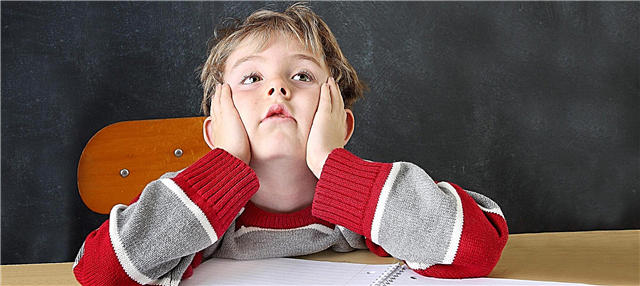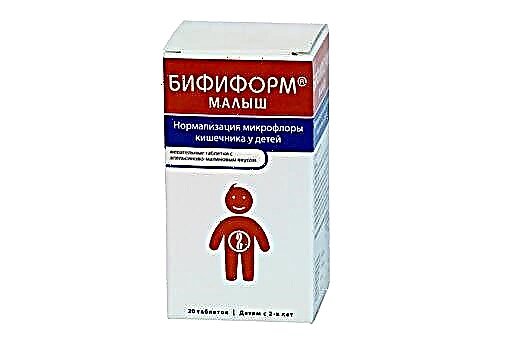
Squint in children is a topic for a very serious conversation, but only after the child is six months old. Before that, some "slanting" in babies may be quite normal, and therefore parents should not worry in vain.
If, after 6 months, the baby apparently "mows", then treatment should be started as soon as possible, according to the well-known pediatrician Yevgeny Komarovsky.
He tells mothers and fathers about how childhood strabismus can be and how to treat it.

Why do babies “mow”?
Dr. Komarovsky urges parents to remain calm and prudent in assessing childhood strabismus. If we are talking about a baby who was recently born, then the reasons may be quite physiological: the muscles that hold the eyeball and allow you to focus your gaze on a certain point are very weak in newborns, because inside the mother's womb such a function is not required for the baby's eyes. These muscles will get stronger by about 3-4 months, and before that the baby can "mow" as he pleases - to the right, to the left, in different directions.
There is also such a concept as pseudo-strabismus, which also applies to babies. The skull of newborns has structural features, its two halves converge at a slight angle, and therefore visually, the adult considering the baby may get the impression that the baby has squint.
If the strabismus does not go away at six months, the reason may already lie in the disease, which is called persistent strabismus, with pathology, focusing the eyes is difficult, therefore the baby looks in different directions. Such a strabismus, in contrast to the physiological, as the eye muscles strengthen, does not disappear anywhere, either after six months or later.


Persistent strabismus in a child can act as a consequence of a previous pathology - it is often caused by hypoxic changes during the period of gestation and in the process of his birth, if oxygen starvation caused damage to the visual centers of the brain, acute infectious ailments of the mother during pregnancy, severe infections by the baby himself, cerebral palsy , Down syndrome.
Komarovsky also emphasizes that there is a hereditary reason, and the baby could inherit an unusual look from his parents.
In any case, after six months of "mowing" the baby, according to Evgeny Olegovich, it is worth showing an ophthalmologist.

How to determine a violation in a baby?
This pathology is quite simple in self-diagnosis, and parents can easily notice characteristic signs and symptoms of visual impairment:
- the child, despite the age of six months, cannot concentrate his gaze at one point (you can use a small bright object that is interesting to the child to check);
- movement of eyes when tracking a moving object is not synchronous;
- if the little one shines a flashlight into the eyes, then one eye closes or, in general, "floats" to the side;
- to look at a toy of interest to him, the child is forced to turn his head towards the object;
- the baby does not estimate the distance to objects, often stumbles or cannot reach and touch, as he reaches for an object that is too far away.

Causes of pathology
Real strabismus in children is not always congenital, and during the first three years of life, as binocular vision is developing and developing, certain deviations may occur. Strabismus can accompany hyperopia or myopia, diseases of the central nervous system, and brain tumors. Strabismus may develop in a child after an injury, a blow to the head, or a head injury.
The danger, as Evgeny Komarovsky says, lies in the fact that gradually in the squinting eye the visual acuity decreases, and the child's picture of the world is formed flat. If you hesitate and do nothing for treatment and correction, then over time the pathology will become worse amenable to therapy.

If the parents know that there were people in the family with strabismus or other problems with the organs of vision, it is important to show the child to an ophthalmologist regularly. Therefore, the Ministry of Health of Russia has established a certain sequence of medical examinations by an eye doctor: at 1, 3, 6 months, and then in a year, 2 years, 3 years, and so on until school age.
There are a lot of types of children's strabismus, and therefore the treatment of one type will differ from the therapy of another, and only a doctor of the appropriate profile can understand this.

Treatment: pediatrician opinion
Before raising the question of the expediency of this or that treatment, the accuracy of the prescriptions, the child must undergo a full examination by an ophthalmologist, according to Evgeny Komarovsky. Everything will depend on how the baby developed strabismus, congenital or acquired.
If we are talking about friendly strabismus, in which refraction is impaired, and the rays of light are not refracted in the same way, then we are talking about hereditary pathology. It usually becomes apparent in childhood. That is why much depends on the timely started correction.

Treatment can be based on glasses, lenses, occlusion. If there are organic lesions, the child will be prescribed surgical treatment. In the paralytic form of the disease, one or more of the eye muscles are affected. This is usually an acquired form of the disease, in which the function of the musculature of the eye can be restored with the help of physiotherapy followed by surgical intervention.
To treat a child on their own, to try to correct pathological vision with folk remedies or methods of alternative medicine is criminal, according to Komarovsky. Moreover, medicine is ready to offer a variety of treatments that will be quite effective and successful.
The companion disorder usually requires treatment for 2-4 years. Evgeny Komarovsky calls the method of wearing occlusive dressings a very effective method. By decision of the ophthalmologist, corrective exercises with projection onto the retina of images through lenses or special glasses can be used.
Wearing occlusive dressings can be associated with inconveniences - a child may be shy, pinched, refuse to attend kindergarten because of peers ridicule. Therefore, Evgeny Komarovsky sees an excellent way out: to send the child to a specialized kindergarten, which is attended by children with vision problems. There will be no one to hesitate, and no one will laugh at a boy or girl with glasses or an occlusive eye patch.
Strabismus treatment is an activity that will require a lot of strength and patience from parents, as well as discipline. The child may be assigned classes on special ophthalmological simulators to normalize the work of the eye muscles, he may have to attend corrective classes on amblyopanorama (the therapeutic effect is achieved due to moving light fields).
Children from 3 years old can be recommended special computer games, which have to be played under the supervision of a physician, in some cases they use 3D vision glasses for classes.
And also parents should pay special attention to strengthening children's immunity - to temper the child, do gymnastics with him, make sure that the child walks more in the fresh air and eats less harmful fast food.
Alternating strabismus (convergent) and divergent strabismus are treated taking into account the individual angle of deviation from the norm.




